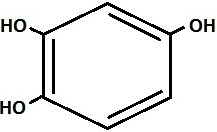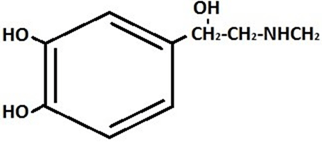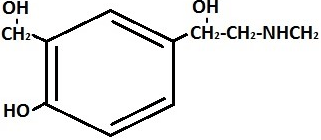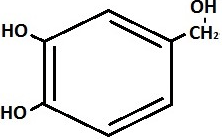This set of Molecular Endocrinology Multiple Choice Questions & Answers (MCQs) focuses on “Adrenal Medullary Hormones”.
1. Epinephrine and norepinephrine are collectively known as?
a) Catecholamines
b) Steroids
c) Peptides
d) Amines
View Answer
Explanation: Epinephrine and norepinephrine are together known as catecholamines. They are related and synthesized from tyrosine in the body. Catecholamines are hormones that are formed by the adrenal glands located at the top of your kidneys.
2. Which among the following is the correct structure of epinephrine?
a)

b)

c)

d)

View Answer
Explanation: Epinephrine contains an extra phenolic-OH group in the benzene ring meta position. It also contains an additional-OH group added to the beta carbon of the side chain. Adrenaline is a hormone and drug which is involved in regulating visceral functions, also known as epinephrine.
3. Where is epinephrine synthesized and stored?
a) Adrenal cortex
b) Pyramids
c) Adrenal medulla
d) Brain stem
View Answer
Explanation: Epinephrine is synthesized and processed mainly in the adrenal medulla. In the sympathetic nervous system, norepinephrine is mostly synthesized and functions locally as a ‘neurotransmitter’ in the postsynaptic cell.
4. Catecholamines cannot penetrate blood-brain barrier.
a) True
b) False
View Answer
Explanation: Catecholamine hormones cannot penetrate the blood brain barrier. As a result, the norepinephrine in the brain must be produced within that tissue itself. In general, catecholamines are unable to penetrate the evolved blood-brain barrier (BBB) to gain entry into the brain, except that ontogenetic production of this barrier appears to have avoided systematic analysis at circumventricular sites where the BBB is absent or defective.
5. Norepinephrine is only present in the adrenergic nerve endings.
a) True
b) False
View Answer
Explanation: Norepinephrine exists as granules/or vesicles of 400 to 500 Å in diameter only in adrenergic nerve terminals. Whereas those in the cytoplasm are likely free. Adrenergic nerves form networks between the CP endothelium and the underlying fenestrated capillaries across the small arteries and veins of the CP, and their nerve terminals are located.
6. Catecholamines are produced from which amino acid?
a) Phenylalanine
b) Tyrosine
c) Lysine
d) Alanine
View Answer
Explanation: The synthesis of catecholamines is basically the same in adrenal pheochromocytes and neuronal cells. Both are produced from the tyrosine amino acid. Catecholamines are water-soluble and in circulation 50 percent are bound to plasma proteins.
7. What is the ratio of catecholamine hormone to ATP stored in the granules in adrenal medulla?
a) 4:1
b) 4:2
c) 4:4
d) 3:1
View Answer
Explanation: The two hormones are stored in the granules of the adrenal medulla and in the adrenergic neurons as an ATP-containing complex with a ratio of around 4 hormone molecules: one ATP molecule. This is in association with other proteins including chromogenin A and chromomembrin B that are not thoroughly characterized.
8. What is the name of the precursor molecule of Catecholamines?
a) Adrenaline
b) D-Tyr
c) L-Cys
d) L-DOPA
View Answer
Explanation: ‘L-DOPA’ is the precursor molecule of catecholamines, it can cross the blood brain barrier. As a result they are used for the treatment of various diseases associated with this hormone in the brain.
9. What happens when catecholamines bind to the alpha receptors?
a) Inhibits adenylyl cyclase
b) Induces adenylyl cyclase
c) Induces guanylyl cyclase
d) Inhibits guanylyl cyclase
View Answer
Explanation: Catecholamines suppress adenyl cyclase when bound to alpha-receptors, thereby decreasing the level of intracellular c-AMP. The action of the alpha-receptor is mediated by decreasing the amount of intracellular c-AMP.
10. What happens when catecholamines bind to the beta receptors?
a) Inhibits adenylyl cyclase
b) Induces adenylyl cyclase
c) Induces guanylyl cyclase
d) Inhibits guanylyl cyclase
View Answer
Explanation: Adenyl cyclase is activated by catecholamines bound to β-receptors (β1 and β2) that increase the cyclic AMP level in the cells. Enhanced intracellular c-AMP levels mediates β-receptor action.
Sanfoundry Global Education & Learning Series – Molecular Endocrinology.
To practice all areas of Molecular Endocrinology, here is complete set of 1000+ Multiple Choice Questions and Answers.
If you find a mistake in question / option / answer, kindly take a screenshot and email to [email protected]
